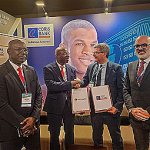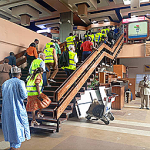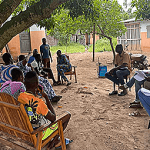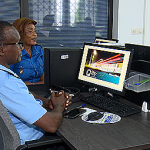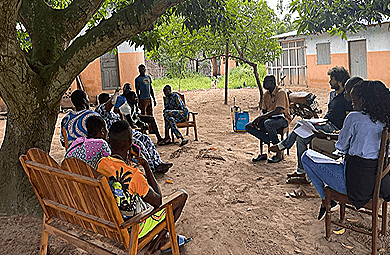Yaoundé, Cameroon – October 31, 2025 – Cameroon has officially launched the tender process for the “rural connectivity” component of its ambitious Digital Transformation Acceleration Project (PATNUC). Backed by an FCFA 55 billion (approximately USD 90 million) investment from the World Bank, this crucial initiative aims to bring 3G mobile connectivity to 328 currently underserved localities across the country by 2028, significantly addressing the nation’s digital divide.
Minette Libom Li Likeng, Minister of Posts and Telecommunications, presided over the ceremonial launch, marking a pivotal step in the project’s implementation. “The ceremony today concerns the solemn launch of tenders for this activity, which constitutes the first step in its realization after obtaining the no-objection opinion issued by the World Bank,” Minister Libom Li Likeng stated.
The project is specifically designed to target “white zones” – areas currently lacking basic mobile network coverage – to foster greater social inclusion and stimulate economic development.
Windfred Mfuh Fuaye Kenji, National Coordinator of PATNUC, detailed the tender structure. He explained that a National Restricted Tender Document (DAONR) with two envelopes has been adopted, covering 120 sites in a “firm tranche” and an additional 208 sites in a “conditional tranche.” The execution of these works is targeted for completion before December 30, 2026.
The PATNUC project, which commenced in 2023, involves a wide array of governmental administrations and operational partners. These include the Ministry of Public Contracts (Minmap), the Ministry of Economy, Planning and Regional Development (Minepat), the Telecommunications Regulatory Agency (ART), Cameroon Telecommunications (Camtel), MTN Cameroon, and Orange Cameroun. This rural connectivity drive is one of three key components of PATNUC, aligning with a broader national vision that leverages digital technology as a catalyst for social inclusion, economic growth, and territorial planning.
Despite Cameroon’s connection to five submarine fiber optic cables, the nation has historically struggled to fully exploit its vast potential. A 2023 report by the International Finance Corporation (IFC) highlighted this issue, noting that “approximately 15% of SAT3 cable capacity and 30% of WACS cable capacity have been utilized since their launch 19 years ago.”
Nevertheless, on-the-ground coverage has seen significant progress, rising from 75% of the population in 2018 to 87.5% in 2024, according to GSMA Intelligence and DataReportal. This progress has been supported by the installation of 2,850 base stations, 42% of which are in rural areas, aided by the Universal Digital Development Fund (FANU) and hybrid solar towers in the Northern and Far Northern regions.
The ongoing effort goes beyond simply extending coverage; it aims to transform connectivity capacity into actual usage. This involves reducing access costs, ensuring reliable energy and maintenance for sites, and guaranteeing high-quality service. Ultimately, PATNUC is tasked with converting this significant investment into the effective adoption of Information and Communication Technologies (ICTs) across all sectors, a prerequisite for sustainable growth and equitable territorial development.



